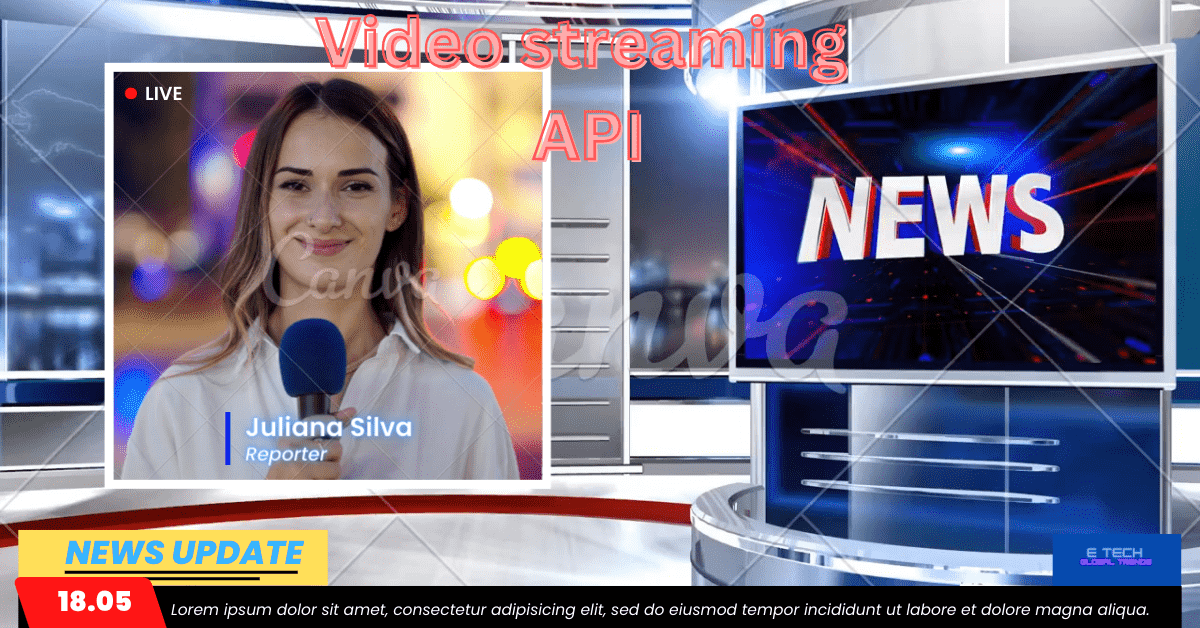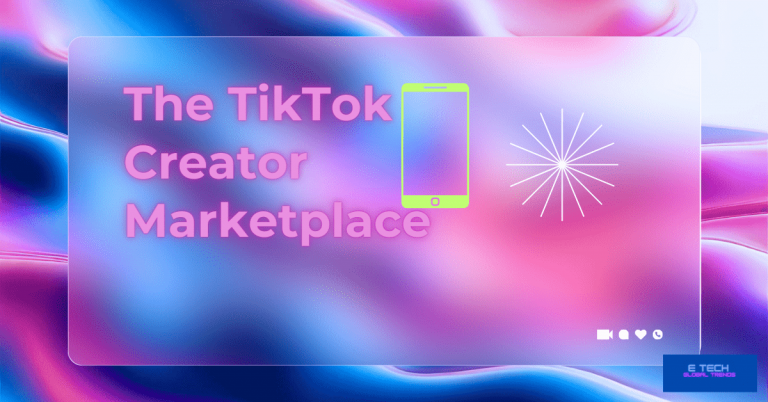Video streaming API
Using a live-video streaming API, you can do, what? Making, starting, and stopping live broadcasts. Is that all? There are many things. Let’s dive deeper.
For the business purpose, what do we suggest?
You have to check carefully the range of market options. if you want to find out about live video streaming APIs for business enterprises. One choice you may consider is StreamingVideoProvider, which provides a thorough API for incorporating live video streaming into your business platform.
They make it simpler for developers to deal with by covering all necessary features and methods in their API documentation. You may choose wisely based on your unique needs and preferences by contrasting StreamingVideoProvider with other suppliers.
Contrary to many other types of APIs that are readily available for free, streaming APIs are often quite expensive for their owners.
For this, common expenditures include servers and CDNs required for encoding and delivery
making it extremely difficult to find a totally free service.
Which API is most suitable for streaming video?
Media material and other types of data are sent to internet-connected devices via streaming. Users may see the data directly without having to download it to their computer or other device because it is supplied simply by a continuous stream of data.
You can control every aspect of a live and on-demand streaming platform with a live streaming API.
Removing established tools, constraints, and suppliers from your application, enables you to incorporate novel configurations. This gives you greater freedom to interact with other platforms and create features that are capable of doing more demanding jobs.(in brief)
- Find out more about the stream
- Set a specific goal
- Transform earlier feeds into VOD
- stream with less lag
- Create sophisticated workflow
- Organize your video assets and metadata
- Performance analysis with the use of analytics
Let’s discuss how to establish a video streaming platform. Then you can choose any existing option when you know correctly how to do this.
Shall we look in?
How can I create an API for streaming live video calls?
There are a few steps you have to follow even to utilize for a business purpose.
1. Select a platform.
Choose if you want to create the API from scratch or utilize an already-existing platform like Twilio Video, or Zoom.
2. Install a server
Create a server using a programming language. such as Node.js, Python, or Java.
and configure it to handle API requests as well as manage video streams.
3. Identity Verification and Authorization
For access control to your API, provide user authentication and authorization. A token or an API key can use for this.
4. Streaming video
Add the ability to stream video using the relevant libraries or services.
For instance, WebRTC offers the ability to stream videos in real-time.
5. Message Server
Create a signaling server to manage sessions, negotiate video codecs, and create connections between users.
6. Servers for STUN and TURN
Use the servers for;
- TURN (traversal employing relays around NAT) and
- STUN (session traversal tools for NAT) to help connect peers.
7. Data stream
Add a data channel if required. so that participants may provide further details during the video chat.
8. Error management
Put in place reliable error-handling procedures to gracefully manage network outages, timeouts, and other problems.
9. Both recording and replay
Apply tools for video call recording and replay if necessary.
10. Evaluation and Improvement
Test your API assiduously to ensure that it functions properly in a range of circumstances. Scalability, bandwidth, and latency should all be optimized.
11. Documentation
Create thorough documentation so that developers can utilize and integrate your API with ease.
12. Security
Put security measures in place, such as encrypting for data transit and safe data storage.
13. Analytics and Monitoring
Install monitoring and analytics software to keep tabs on your API’s performance and learn more about user behavior.
Careful! In order to create a seamless user experience, keep in mind that developing a live video streaming API might be complicated. If third-party services fit your needs and reduce development time, think about employing them.
How difficult is it to create a video and audio calling app?
Why do unique APIs look good?
The size and scope of the program, the functionality and features needed, the number and expertise of the team, and the development technique may all affect how long it takes to develop a video-calling app.
It may take 3 to 6 months to create a straightforward video calling software including the essentials like texting, file sharing, and one-to-one video conversations.
A more complicated software, on the other hand, can take over a year to build if it has advanced capabilities like;
- group video conversations,
- screen sharing, and
- recording, including real-time language translation.
Idealization, design, programming, testing, and launch are the many steps involved in producing a video calling App.
Each of these phases can affect how long a project takes to develop.
To guarantee the App’s excellence, efficiency, and overall success, it is crucial to provide sufficient time for each step.
What services does the video call API offer?
The video call API’s features mostly consist of the following:
- invitation to call
- Video and voice calls
- UI and interactivity for calls
- Offline push capability
With Zegocloud’s video call API, you can easily integrate interactive live video streaming and one-to-one and group video calling into mobile, desktop, along web applications for a variety of use cases, such as online education and entertainment.
Zegocloud
The greatest SDK and API offer Zegocloud with live video streaming. You include the most comprehensive live streaming platform in your web and mobile apps.
ZEGOCLOUD Video calls API features include:
What are the improved features of Zegocloud video streaming API?
- Voice interaction is more enjoyable and interesting by using audio beautification, voice changes, and various other audio effects.
- Zegocloud provides technologies like artificial intelligence-assisted facial beautification, virtual cosmetics, and more to enhance your facial appearance during video conversations.
- Real-time audio may be given spatial effects to make conversation more immersive.
- More in-the-moment communication is made possible by SEI by combining text communications with video broadcasts.
How do I find out about an enterprise business’s live video streaming API?
To discover more regarding live video streaming APIs for corporate enterprises, it is necessary to conduct research and investigate various market options.
StreamingVideoProvider is one option to examine since it provides a full API for incorporating live-streaming features into your company platform. Their API documentation includes key functions and characteristics, making development easy.
You may make an informed selection based on your individual requirements and preferences by contrasting StreamingVideoProvider with other providers.
Which API is the most suitable for video streaming?
VOD (Video On Demand) is gaining popularity as a method of watching video material through a subscription and/or purchase mechanism.
Technology that allows video material, such as films and television series, to be sent directly to particular customers for rapid viewing. Video content is saved as compressed digital files on a centralized server within a cable television VOD system.
In contrast with standard television, which restricts viewers from watching programs on a set schedule, VOD provides consumers the freedom to watch media at a particular time and platform.
VOD platforms include Netflix, Amazon Prime, and others.
It is difficult to publish videos on prominent video hosting services.
It entails transcoding the first video files;
- at different resolutions,
- determining the proper bitrates,
- picking the best formats, and
- a variety of additional parameters.
Not forgetting the computational costs, engineering labor, and time required to establish and manage a tech pipeline. Gumlet optimizes video automatically by selecting the appropriate transcoding setting.
What are the crucial parameters before selecting a video streaming API?
What platforms for video conferencing provide streaming APIs?
Everywhere, video communication has grown in popularity. The opportunity was grasped by established businesses and startups, which provided user-friendly video chat software for online dating, business meetings, and pleasant conversations.
Following the COVID-19 outbreak, widespread usage of these conferencing applications has become popular.
The following is a selection guide for the Video Chat API/SDK.
Performance Compatibility by Feature Set
Cost and Pricing Structure.
These applications’ wealth of capabilities, including video calling and the capacity to share displays and communicate in real-time, characterize their ease.
Several video conferencing services offer streaming.
1.0 Gulmet
Gumlet uses cutting-edge codecs & in-house algorithms in order to guarantee that video converting( transcoding) is both efficient and high-quality.
Features;
- Cost-effective: Gumlet only costs for input minutes.
- Simple to Scale: Full API access.
- Gumlet provides per-title encoding and speedier delivery of video content.
- Security: DRM and other measures incorporated in.
2.0 Vimeo
Users of Vimeo may build a video hub for their businesses. Particularly for businesses wanting to incorporate video into their company’s operations plans without having to invest in and allocate the required technological resources themselves.
Vimeo’s open API is particularly beneficial. It can produce OTT channels, support live events, and do much more.
Because Vimeo offers APIs, libraries, and SDKs in many languages, including Python, PHP, and Node.js, is now using by many organizations.
Features:
- Every aspect, from embedding settings to licensing, is simple to manage, distribute, and significantly alter.
- The videos are streamed and hosted in the highest 4K Ultra HD resolution.
- There is no point in feeling afraid about operating out of space because there are many different storage alternatives.
- Utilize the Vimeo tool for Android as well as iOS smartphones to watch your films offline.
3.0 Twilio
Using the Twilio API, users can create faultless video experiences with controllable bitrates and top-notch playback.
Applications are developed using this technology for both generating interpersonal video discussions and broadcasting live events. For one-on-one conversations, Video WebRTC Go, Video P2P, and video Groups are among the offered options.
Features:
- Make individual video rooms for the participants.
- Ensures compliance with GDPR.
- To stay abreast of network circumstances, provide Network Quality API.
- Switch on PSTN dial-in.
4.0 Mux
Instead of offering drag-and-drop functionality. it is a ready-to-use API with robust live video streaming.
API developers can integrate into their already-built apps or websites to create custom video experiences.
In addition to more complicated features like setting up webhooks and interacting with serverless deployment tools, it includes two essential features audience and stream health metrics and audience and closed captioning.
Mux Features:
- Livestream to websites run by third parties, including Twitch and YouTube.
- To get the best sound quality, offer normalized audio functions.
- Take photographs and record little video clips from your films.
5.0 DailyMotion
It is a major video-sharing site and video streaming API around the globe.
The Dailymotion API allows programmers to construct wonderful apps that provide Dailymotion content to users.
Users may see the videos immediately in the app.
Features-DailyMotion
- There is HLS adaptive streaming available.
- 2160p and 4K resolutions are available.
- High Frame Rate (HFR) allows for up to 60 frames per second.
- Live streaming includes DVR functionality (pause, play, and rewind).
6.0 Agora
Whether the customer wants to create a video service with real-time interactions for an even more private classroom environment or live stream big events, Agora is a great option.
By combining speech and video apps, users may interact more with Agora.io Real-Time speech and Video Engagement. This is due to its unique collaborative interactive whiteboard, thorough performance metrics, and cloud recording features.
Utilizing the Agora App Builder, anybody can create custom apps without any coding experience.
Features:
- Stream utilizing an SD-RTN network for extremely low latency.
- Use the Flexible Classroom feature to establish an interactive learning environment.
- Create and include chat programs to interact with the audience.
7.0 Brightcove
With regard to ingestion, live transcoding, playback, CMS integration, & analytics, Brightcove offers a broad variety of SDKs and unique APIs.
It also offers a wide range of APIs instead of just one or two, allowing consumers to engage with many of your technologies as well as distribute video across various devices.
Features:
- For content publication, use your preferred CMS.
- Utilize RTMP & HLS outputs to reach your intended audience.
- Make the Brightcove streamer your own with CSS and JavaScript.
- CDN and player plugins are simple to automate and add.
8.0 Kaltura
Being an open-source company, Kaltura gives you access to a wide range of REST APIs so you can programmatically manage all of its key features.
Users may integrate it with their existing tech stack, build custom apps, use a number of widgets & solutions, etc.
The Kaltura Software Framework makes it incredibly simple to build the video communications platform that your company needs.
Features:
- Experience API (xAPI) is made available to standardize data collecting.
- Make interactive videos and use them.
- gives the Kaltura API interface the ability to review content before publication.
9.0 Sinch
Sinch primarily focuses on the healthcare, financial, and e-commerce sectors.
It focuses on web and mobile peer-to-peer communication and provides video chat SDKs for Android, iOS, & JavaScript.
10.0 MirrorFly
A web- and mobile-friendly video chat API is called MirrorFly. Although it may accommodate more informal alternatives as well, it tends to lean more toward corporate applications.
What is the Best live-streaming video API for creating an individual live-streaming website?
Take a closer look at Ant Media Server. It consists of an ultra-low latency. WebRTC is this Live Streaming Media Server you’re seeking live streaming software? Wow, Then it’s correct. With it create your own hosted and managed platform.
WebRTC-based, exceptionally low-latency live streaming is possible with this application platform. particularly the pro edition.
Since you can host it on your own server, scale it, and modify the user interface, the customization options will match the task.
Use the plugin system to modify the video feed and create individualized and distinctive live-streaming experiences.
Summary
Even though many platforms are available on the net, first, closely determine your real business requirement. Before selecting one, you might want to take into account your unique demands and requirements as each of these different video streaming options has advantages and disadvantages of its own.
Hope this content helps.
Cheers!
Read more on related topics; Top video generators , video marketing strategy







